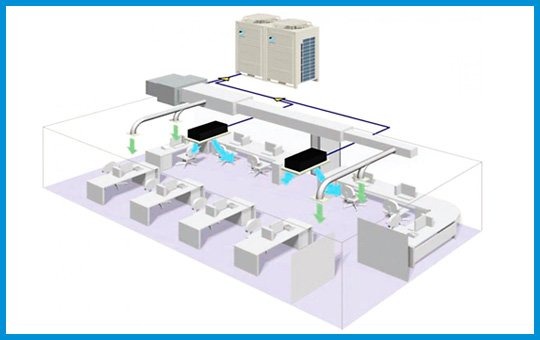Australia has its fair share of scorching hot summer days, so as temperatures go up, you’re bound to turn up the air conditioner, too. But with rising temperatures come hefty utility costs, which have made energy efficiency a major consideration for homeowners.
Although just about every home in Australia has an air conditioning unit, not all of them are built the same. Currently, the two most common types of air conditioners are ducted and split systems. A split system includes a wall-mounted indoor unit that heats or cools a single room. While they have a lower upfront cost, their limited capacity makes them unsuitable for cooling or heating your entire home. In contrast, a ducted system is much more effective at regulating the temperature of each zone.
How A Zoned Air Conditioning System Works
Now that you know the main difference between split and ducted systems, you’re probably wondering, ‘how does zoning work?’ A ducted air conditioner uses a zoning system to divide the home into different areas that can be cooled or heated independently. When you’re able to regulate the temperature for each separate room, you get greater climate control.
The main unit is connected to a network of ducts that allow better zone control. Typically, a zone includes a specific main area, but you can divide zones based on separate rooms, too.
When you need to install a ducted air conditioner, professionals recommend a unit based on average usage patterns rather than the size of your property. During the day, the system cools areas like the kitchen and main living areas. At night, conditioned air is directed to the bedrooms for greater efficiency.
One of the main reasons ducted air conditioning is much more energy efficient is that the system won’t need to cool or heat the entire house equally. The central unit is an essential part of the system because it has dampeners to control air flow. The zone controller system also comprises thermostats, which help determine whether to block or release hot/cold air.

Parts of a Zoned Ducted Air Conditioning System
Here are the main components of a ducted air conditioning system.
- Zones: These are different areas of your home that you want to heat or cool individually.
- Vents: Conditioned air passes through vents, which are available in different designs so they blend into the interior.
- Control Units: In most cases, you can control the system through a centrally located control unit. But if you prefer higher efficiency, you can get an advanced system with individual controls for various zones. Such models also let you control the temperature from your phone.
- Indoor Unit: This part is installed in the roof cavity, and it delivers warm or cool air to your home. It comprises filters, a fan, a heat exchange coil, and a thermostat.
- Outdoor Unit: It eliminates heat gathered by the indoor unit and helps deliver freshly cooled air back to the room. It comprises a fan, heat exchange coil, and compressor.
- Dampers: These are mechanical valves that regulate air flow in specific areas.
- Sensors: They detect the temperature of specific rooms to regulate cold or warm air flow.
Advantages of Zoned Air Conditioning
Ducted systems work by providing varying degrees of airflow to different parts of the home, but that’s not all. They also offer the following benefits.
Greater Control and Energy Savings
Because of its zone control capabilities, a single ducted air conditioning system is much more efficient than installing multiple split systems. Higher efficiency means that you’ll end up facing lower running costs and electricity bills. That’s because you can stop cooling areas that aren’t being used.
Noise-Free
Because the main cooling unit is placed on the roof, ducted air conditioning operates much more quietly than a simple split system.
Prevents Allergens
If you or your loved ones have weak immune systems, you’ll be pleased to know that this air conditioner system removes dust particles from the air. Since it removes pollutants and contaminants, it’s suitable for the elderly and young children.
Disadvantages of Zoned Air Conditioning
While zone control is a major benefit, there are a few disadvantages of this system:
High Installation Cost
Because these air conditioning systems need more ducts and careful planning by an expert team, they’re more expensive to install. Nevertheless, they provide increased efficiency, which allows you to save money in the long run.
Only Suit Certain Layouts
Despite offering impressive temperature control capabilities, a ducted system can be unsuitable for some layouts. This is especially true if the roof or floor doesn’t have enough space to fit the cooling unit.
Speak To Local Experts About Zoned Air Conditioning
Want to experience the perks of zone control and energy efficiency with ducted air conditioning? Our crew is licensed, insured, and experienced in installing all types of aircon systems. Call us today for a free quote!


